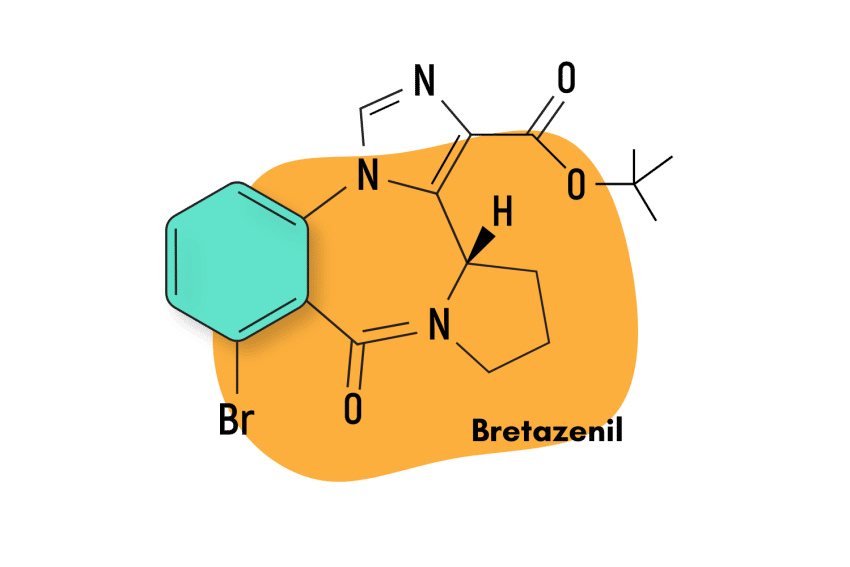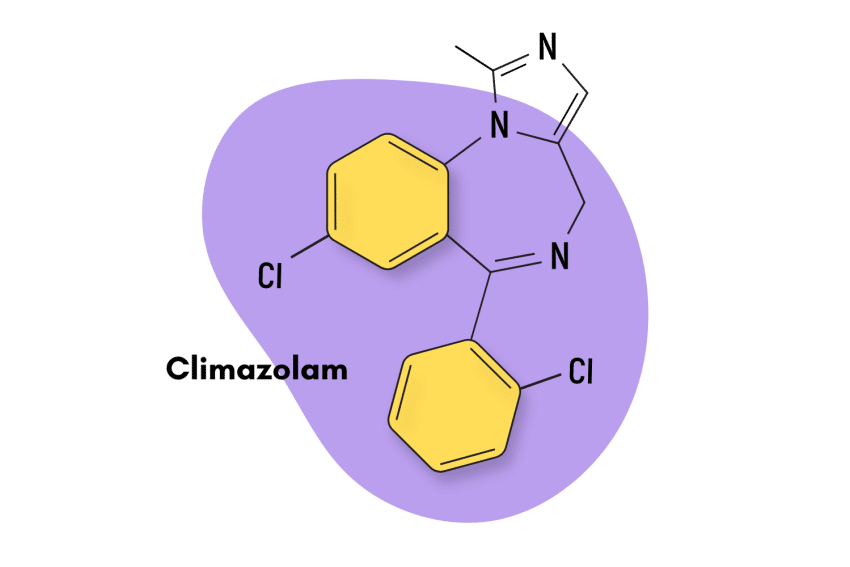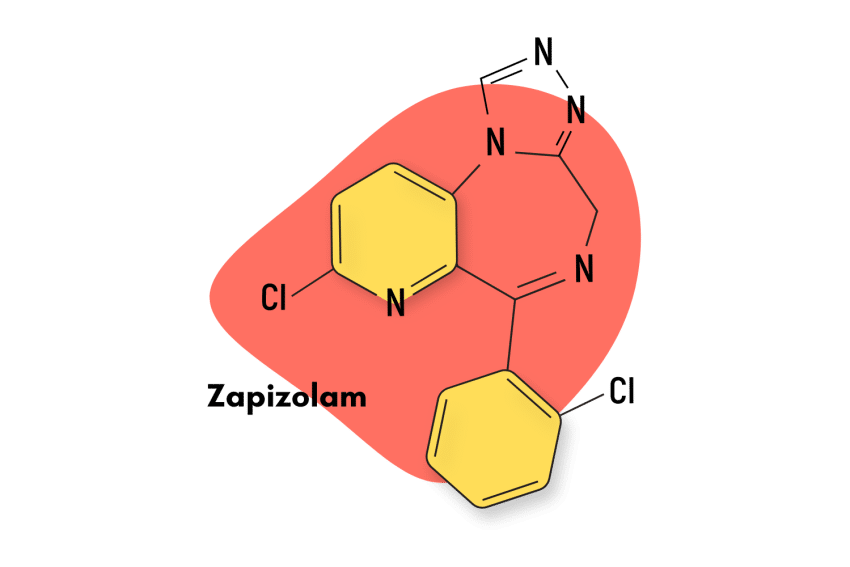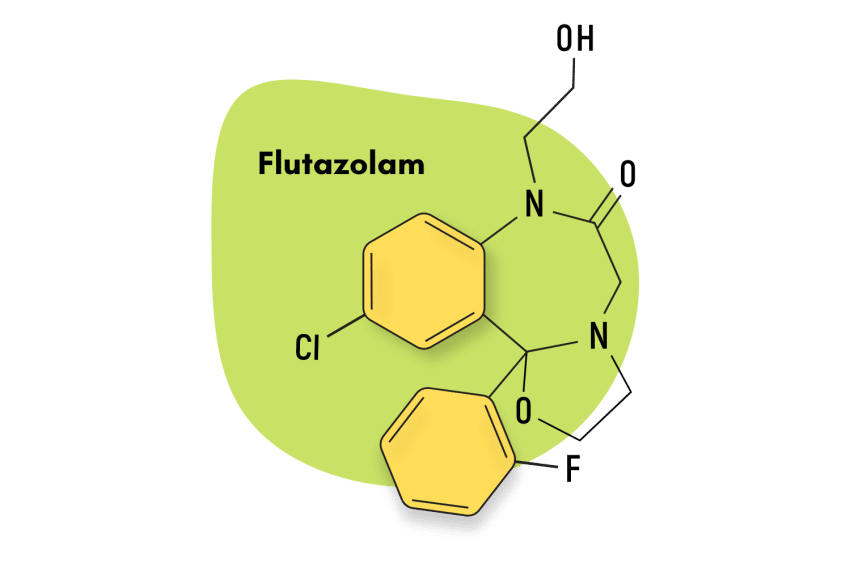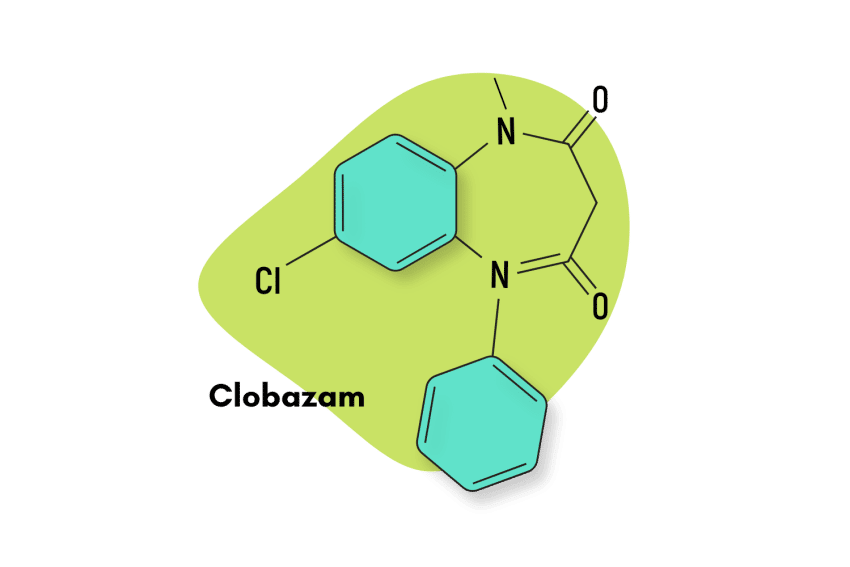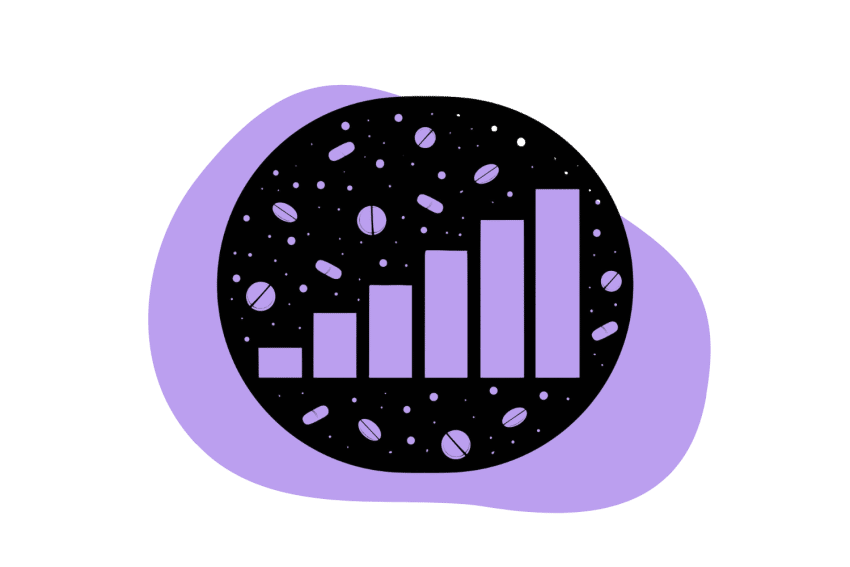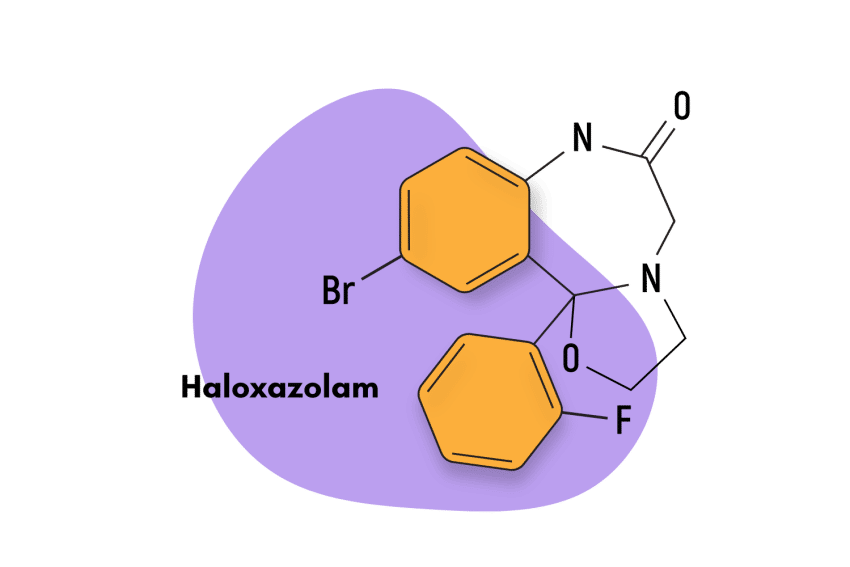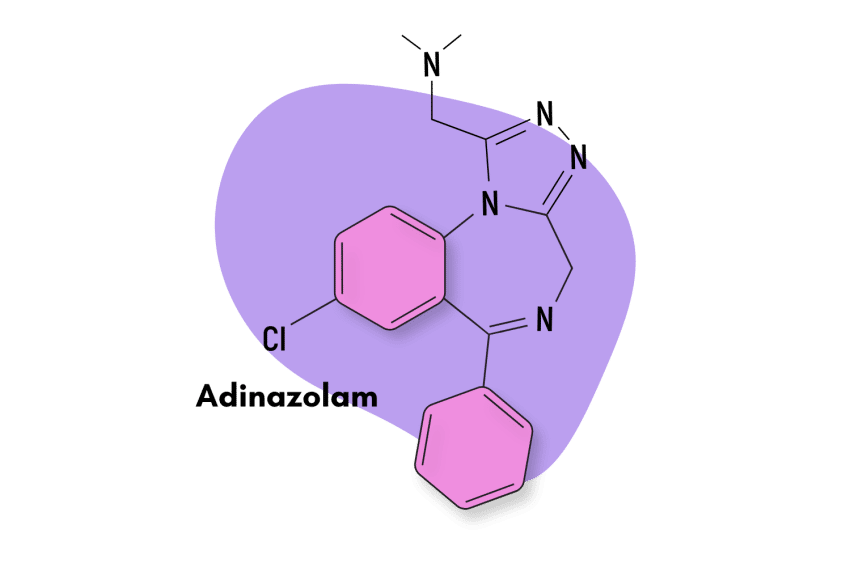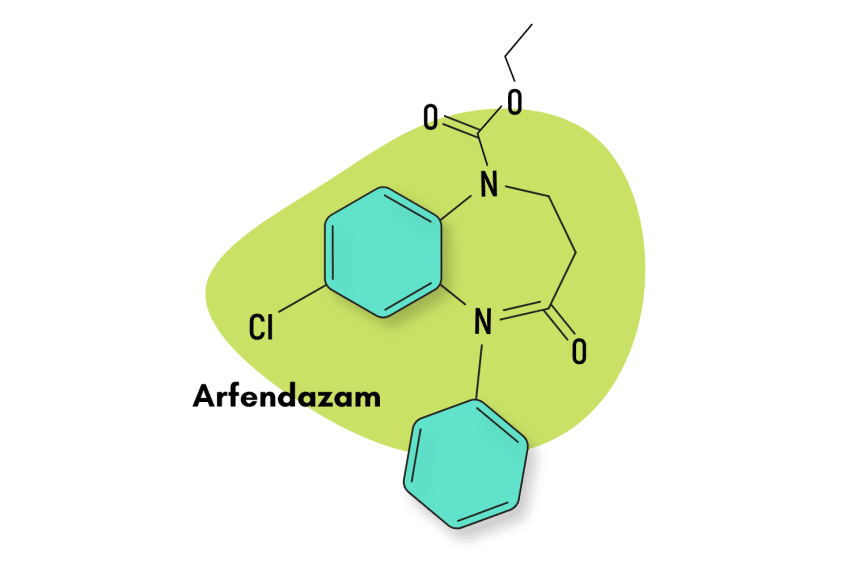Quazepam Fact Sheet & Harm Reduction Guide
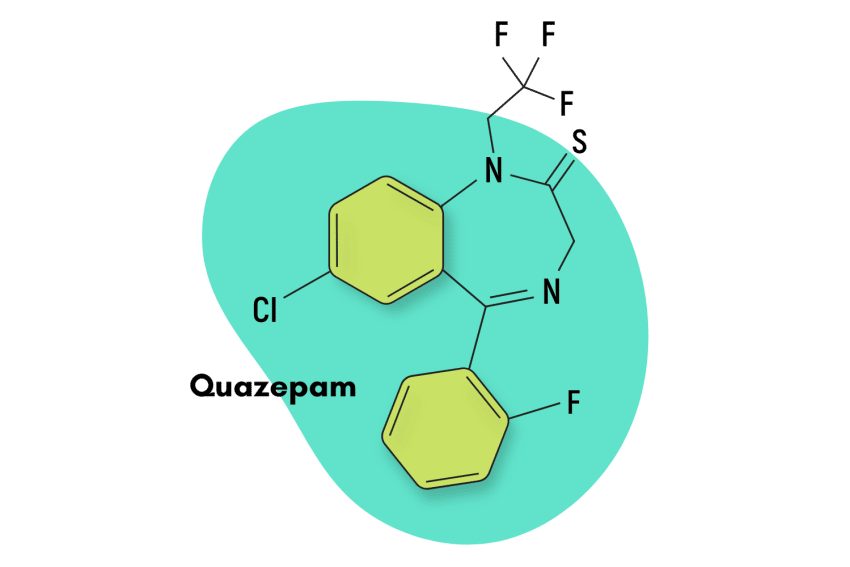
Developed and patented by the Schering Corporation in the 1970s, quazepam, also known as Doral, is a powerful benzodiazepine drug with anxiolytic and sedative effects.
According to the FDA, quazepam is indicated for treating insomnia characterized by difficulty falling asleep, frequent nocturnal awakenings, and/or early morning awakenings.
Compared to other benzodiazepines, quazepam is considered a long-acting compound (39-120 hours) and displays a relatively low potency, with 25 mg roughly equivalent to 10 mg of diazepam.
Evidence suggests that quazepam is as effective as flurazepam and triazolam in usual therapeutic doses and causes minimal rebound insomnia following its withdrawal, unlike rapidly eliminated benzodiazepines such as triazolam [1].
Quazepam Specs
| Status | Approved 💊 |
| Common Dosage | 10-15 mg |
| PubChem ID | 4999 |
| CAS# | 36735-22-5 |
IUPAC Name:
7-chloro-5-(2-fluorophenyl)-1-(2,2,2-trifluoroethyl)-3H-1,4-benzodiazepine-2-thione
Other Names: Doral
Metabolism
Quazepam is metabolized in the liver mainly by CYP3A4 and to a minor extent by CYP2C9, CYP2C19, and FMO1 to 2-oxoquazepam, which was then further biotransformed to N-desalkyl-2-oxoquazepam and to 3-hydroxy-2-oxoquazepam mostly by CYP3A4 and CYP2C9. CYP3A4 is the enzyme predominantly responsible for all the metabolic pathways of quazepam [2]. Furthermore, it is important to point out that both metabolic byproducts display pharmacological activity.
Duration of Effects
According to its FDA label, quazepam is rapidly (absorption half-life of about 30 minutes) and well absorbed from the gastrointestinal tract. The peak plasma concentration of DORAL is approximately 20 ng/mL after a 15 mg dose and occurs at about 2 hours. The mean elimination half-life of quazepam is around 39 hours, while that of its main active metabolite, N-desalkyl-2 oxoquazepam, is 73 hours. Combined, this means the average half-life of quazepam is around 39-12- hours.
Benzodiazepine Dosage Equivalency Calculator
**Caution:** Benzodiazepines have a narrow therapeutic window. Dose equivalents may not be accurate in higher doses.
This calculator does not substitute for clinical experience and is meant to serve only as a reference for determining oral benzodiazepine equivalence.
Please consult a medical practitioner before taking benzodiazepines.
How Does Quazepam Work?
Quazepam’s general mechanism of action is comparable to other classical 1,4-benzodiazepines, which means that it interacts with GABA-A receptors in the brain and central nervous system (CNS) to produce an allosteric effect. This, in turn, potentiates the natural inhibitory effect of GABA and produces the classical range of effects related to benzodiazepines.
The precise mechanism of action of quazepam is unknown, but there are some unique properties scientists have discovered so far. For instance, quazepam has been found to selectively bind to the α1 subunit in type 1 GABA-A receptors. In contrast, most other benzodiazepines are unselective and will bind to subunits in both type 1 and type 2 GABA-A receptors [3].
This characteristic gives quazepam unique hypnotic qualities and makes its pharmacology comparable to Z-drugs like zaleplon and zolpidem. Additionally, this trait also makes quazepam less prone to causing side effects than other benzodiazepines, as well as less of a potential to provoke physical dependence [4]. However, it should be noted that N-desmethyl-2-oxoquazepam, one of the byproducts of quazepam, binds unselectively to both type 1 and type 2 receptors.
Additionally, studies in animals and humans have demonstrated that electroencephalogram (EEG) changes induced by quazepam, unlike most other hypnotic benzodiazepines, do not significantly differ from normal sleep patterns [5]. Quazepam has also been shown to promote slow-wave sleep [6].
These qualities make quazepam a unique benzodiazepine when it comes to hypnotic qualities and is the reason why this compound has enjoyed much success in the treatment of insomnia-related conditions.
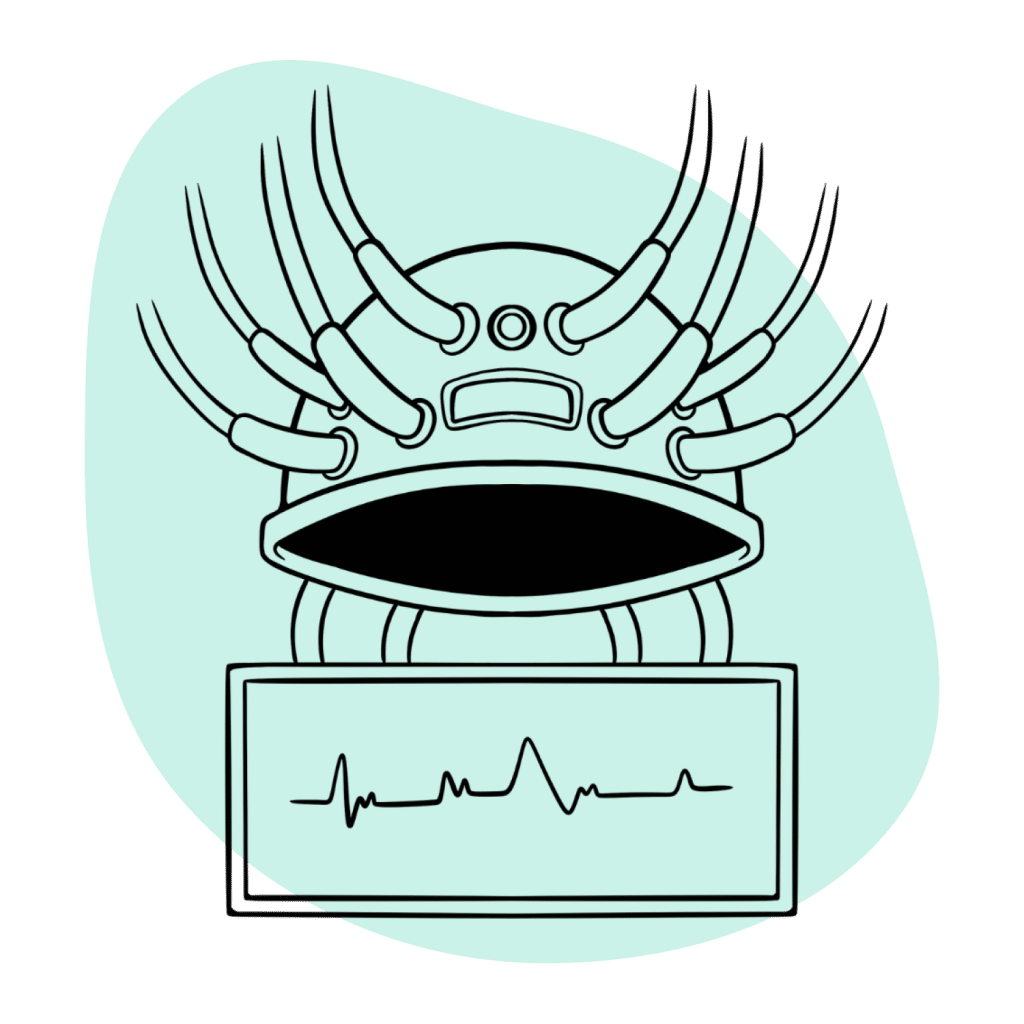
Is Quazepam Safe? Risks & Side Effects
In general terms, all benzodiazepine use implies a level of risk that the user must consider. Besides a few compounds under Schedule III, almost all benzodiazepines are classified as Schedule IV compounds under the Controlled Substances Act. This means that although they have recognized medical uses, they also carry the potential for physical dependence and misuse, which can lead to severe harm.
Benzodiazepines are relatively safe compounds when taken strictly with a prescription; however, the potential for misuse must be factored into the equation in real life.
Recent upticks in polydrug abuse have shown how dangerous benzodiazepines can become when misused.
A 2020 study by the National Institute on Drug Abuse (NIDA) concluded that benzodiazepines were involved in 16% of opioid-related deaths in that year.
Another study by the CDC, also from 2020, showed how benzodiazepines were involved in 12,190 deaths in the United States.
This risk potential is common to all benzodiazepines, but, at the same time, it’s also important to recognize the differences in risk when it comes to individual benzodiazepines.
In this sense, research has demonstrated that quazepam is significantly safer to use and exhibits fewer side effects than most other benzodiazepines. This is due to its unique selectivity for certain GABA-A subunits.
For example, quazepam is significantly less likely to induce respiratory depression (the leading cause of death among drug overdoses) or adversely affect motor coordination [7].
Side Effects of Quazepam
According to its FDA label, the following side effects have been identified with quazepam use:
- Agitation
- Amnesia
- Anxiety
- Ataxia (very rare)
- Confusion
- Constipation
- Daytime drowsiness
- Decreased libido
- Depression
- Dizziness
- Dry mouth
- Dyspepsia
- Euphoria
- Fatigue
- Headache
- Hypokinesia
- Jaundice
- Loss of coordination
- Menstrual irregularities
- Nausea
- Nervousness
- Nightmares
- Palpitations
- Rashes
- Tremors
- Urinary incontinence
It should be noted that rebound insomnia is much less likely with quazepam than with other hypnotic benzodiazepines.
Due to the long elimination half-life of quazepam’s metabolites, the side effects most commonly reported are daytime sedation, fatigue, and lethargy.
Lastly, quazepam’s side effects are dose-dependent, which means that a reduction in dosage can usually avoid them entirely.
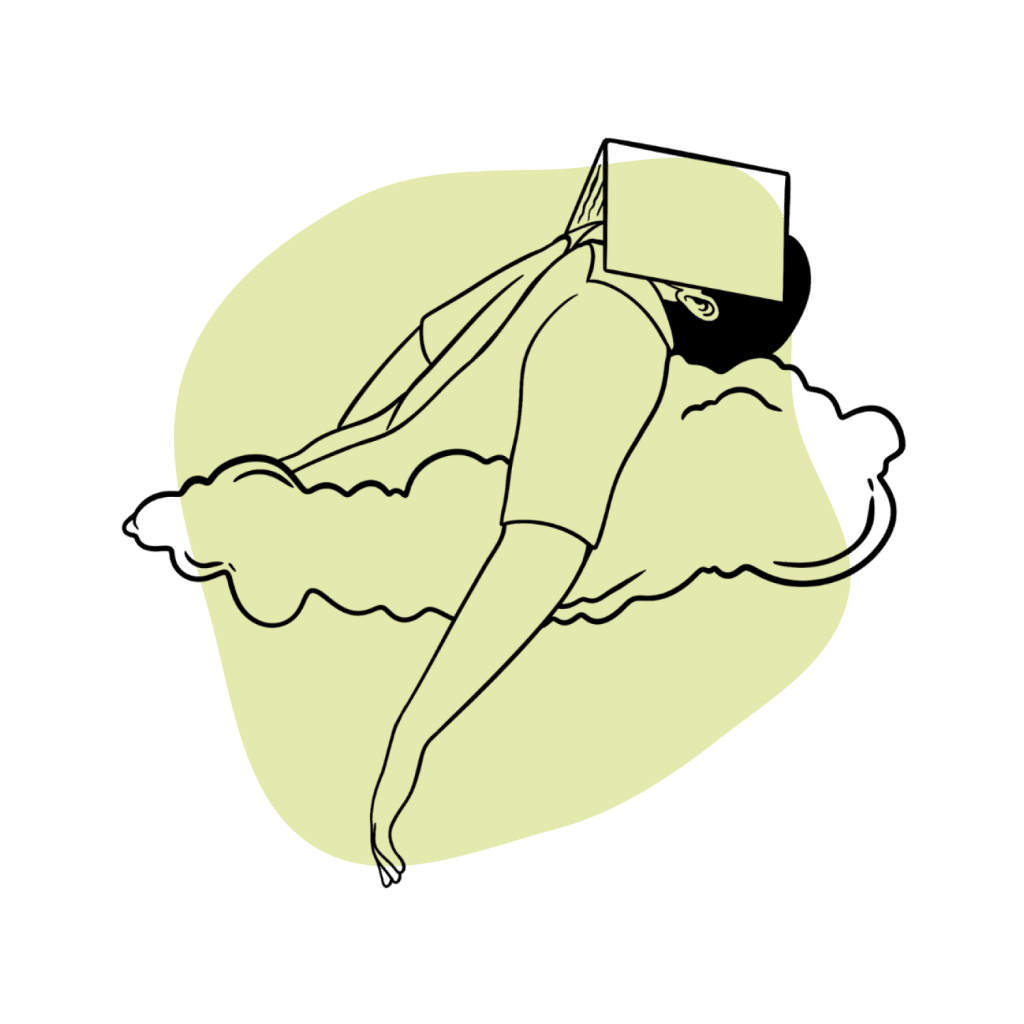
Benzodiazepine Withdrawal & Dependence
Benzodiazepines are so prevalent in causing withdrawal symptoms that it is standard practice for doctors to try and prescribe benzodiazepines for the shortest time frame possible. Furthermore, sudden discontinuation of benzodiazepines isn’t recommended. Unless the treatment window is very short, most doctors will gradually wean users off a benzodiazepine prescription.
Doctors take such precautions because benzodiazepine withdrawals are unique. Indeed, only withdrawal symptoms stemming from alcohol and benzodiazepines can potentially turn fatal. However, this is rare and only tends to happen if the person experiencing withdrawals does not seek medical attention.
Harm Reduction: Quazepam
In this section, we want to provide a set of easy-to-follow rules to minimize a user’s exposure to risk while using benzodiazepines or any other pharmacological prescription. We want users to equip themselves with as much information as possible to make the correct decisions that will keep them safe.
Benzodiazepine Harm Reduction Tips:
- 🥣 Don’t mix — Mixing benzodiazepines with other depressants (alcohol, GHB, phenibut, barbiturates, opiates) can be fatal.
- ⏳ Take frequent breaks or plan for a short treatment span — Benzodiazepines can form dependence quickly, so it’s important to stop using the drug periodically.
- 🥄 Always stick to the proper dose — The dosage of benzos can vary substantially. Some drugs require 20 or 30 mg; others can be fatal in doses as low as 3 mg.
- 💊 Be aware of contraindications — Benzodiazepines are significantly more dangerous in older people or those with certain medical conditions.
- 🧪 Test your drugs — If ordering benzos from unregistered vendors (online or street vendors), order a benzo test kit to ensure your pills contain what you think they do.
- 💉 Never snort or inject benzos — Not only does this provide no advantage, but it’s also extremely dangerous. Benzos should be taken orally.
- 🌧 Recognize the signs of addiction — Early warning signs are feeling like you’re not “yourself” without the drug or hiding your habits from loved ones.
- ⚖️ Understand the laws where you live — In most parts of the world, benzodiazepines are only considered legal if given a prescription by a medical doctor.
- 📞 Know where to go if you need help — Help is available for benzodiazepine addiction; you just have to ask for it. Look up “addiction hotline” for more information about where you live. (USA: 1-800-662-4357; Canada: 1-866-585-0445; UK: 0300-999-1212).
General Safety Considerations
One of the primary things to remember when using prescription drugs is the importance of avoiding misuse. Misuse, especially recreational misuse, is the most significant contributing factor to prescription drug-related deaths. However, there are plenty of other ways that users can unknowingly misuse their prescriptions. For instance, even slight changes in dosing quantities can be considered misuse.
Also, users should seriously assess their capability of using a prescription responsibly. If they have a history of abusing drugs or alcohol, it is much more likely that they will engage in misuse when it comes to their pharmacological prescriptions.
In general, users should also seek to limit both the quantity and the duration of their treatment, as this will help them limit their exposure to physical dependence. When a user decides to permanently use prescription drugs, a physical dependence will inevitably develop. Prescription drugs should not be treated as an indefinite solution except in cases where it is necessary.
Lastly, we don’t want to encourage the use of prescription drugs in a recreational fashion, but we do want recreational users to limit their risk as much as they can. In this sense, we urge recreational users not to combine drugs; if you must use a drug recreationally, at least limit your risk level by not using different drugs together. Also, when it comes to benzodiazepines and opioids, recreational users should try to procure antagonist compounds that can reduce the effects of an overdose, like flumazenil or naloxone.
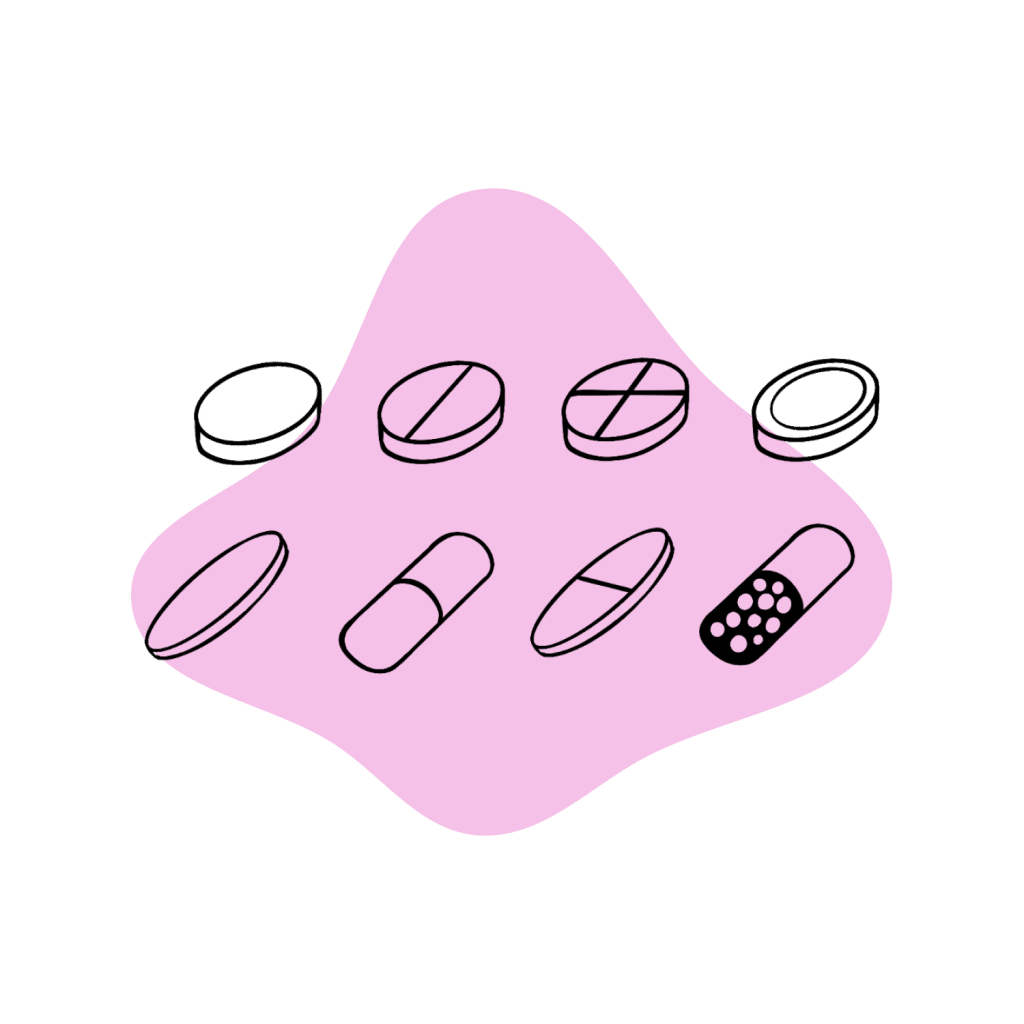
Quazepam Drug Interactions
As mentioned before, prescription drugs should never be mixed unless approved by a licensed physician. And when it comes to benzodiazepines, extreme caution should be exercised with other compounds that can potentially depress the CNS, like alcohol, opioids, barbiturates, and other benzodiazepines.
If a prescription drug’s metabolism is mediated by the CYP enzyme system, the user must also keep in mind the potential for CYP drug interactions.
There are many types of compounds that can interfere with a CYP enzyme by either suppressing or potentiating it,. This can thus affect the proper metabolism of another compound whose clearance happens to be affected by that same CYP enzyme.
When a CYP enzyme is suppressed, this makes the clearance of drugs metabolized by that enzyme less efficient. This is dangerous because it can lead to a build-up of the drug within the body, which typically increases the incidence of adverse effects. Conversely, when a CYP enzyme is potentiated, it can increase the metabolism of a given compound and thus reduce the effectiveness of a given treatment.
Quazepam Contraindications
According to the FDA, the following contraindications are listed for quazepam:
- Chronic pulmonary insufficiency
- Concomitant use with opioids or other CNS-depressant compounds
- Driving or use of heavy machinery
- Established or suspected sleep apnea
- Existing psychiatric disorders
- Known hypersensitivity to quazepam or other benzodiazepines
Additionally, rare instances of angioedema involving the tongue, glottis, or larynx have been reported in patients after taking the first or subsequent doses of quazepam. Some patients have had additional symptoms such as dyspnea, throat closing, nausea, and vomiting that suggest anaphylaxis. Patients who develop such reactions should not take quazepam again.
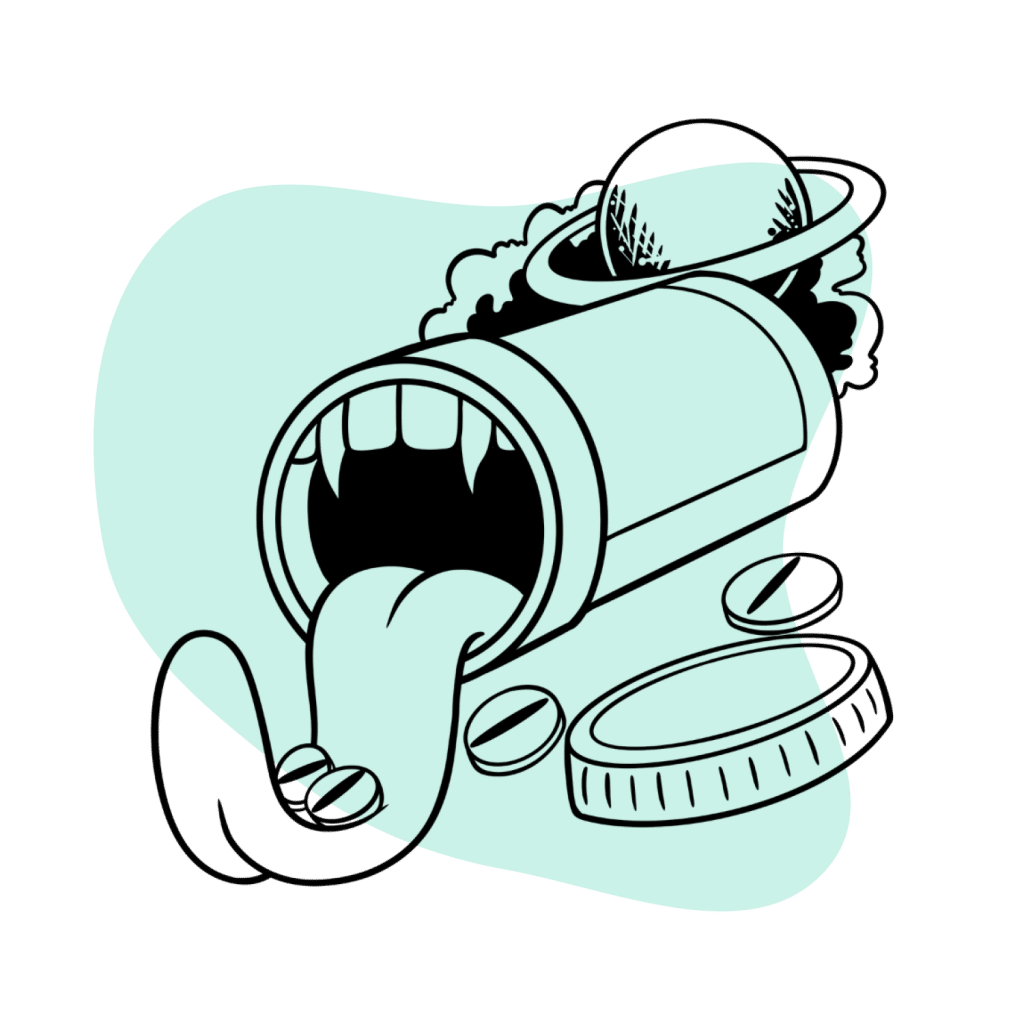
Proper Dosage
According to the Mayo Clinic, the proper dosage quantities for quazepam can be found below (oral tablets):
For insomnia:
| Age group | Dosage recommendations |
| 🧑🏻 👨🏽🦳 Adults and older adults | At first, 7.5 milligrams (mg) (half-tablet) at bedtime. Your doctor may adjust your dose as needed. |
| 🧒🏼 Children | Your doctor must determine the use and dose. |
Elderly patients should receive a comparatively lower dose than adults. Additionally, when starting treatment with quazepam, users should determine if their starting dose impairs their psychomotor skills significantly. If so, they should speak to their doctor and find out how much they should reduce their dosage.
Similar Benzodiazepines
Quazepam is unique in terms of its pharmacological profile, but that does not mean it doesn’t have similarities with other benzodiazepines.
Fletazepam
In terms of chemical structure, fletazepam holds many similarities with quazepam, although pharmacologically speaking, they’re pretty different. Both compounds are classified as N-triflyouroethyl substituted benzodiazepines.
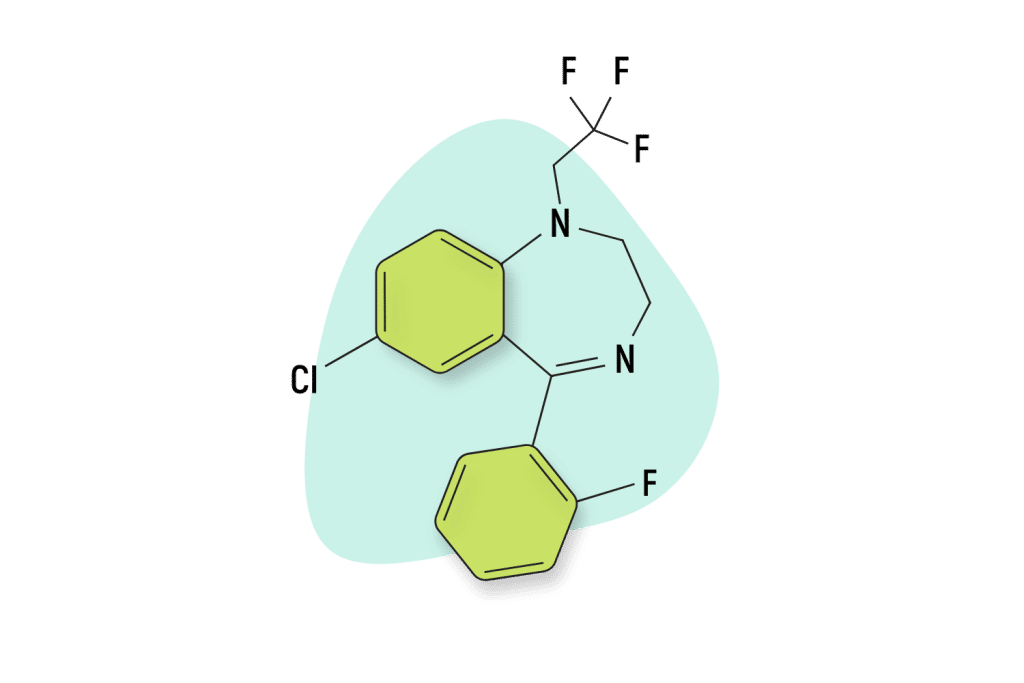
Cinazepam
Cinazepam is an atypical benzodiazepine derivative, which means it looks like a benzodiazepine but doesn’t act like one. It holds a significant pharmacological similarity with quazepam in that it is also one of the few benzodiazepines which do not disrupt sleep architecture in humans. For this reason, it is also popular as a treatment for insomnia-related conditions.
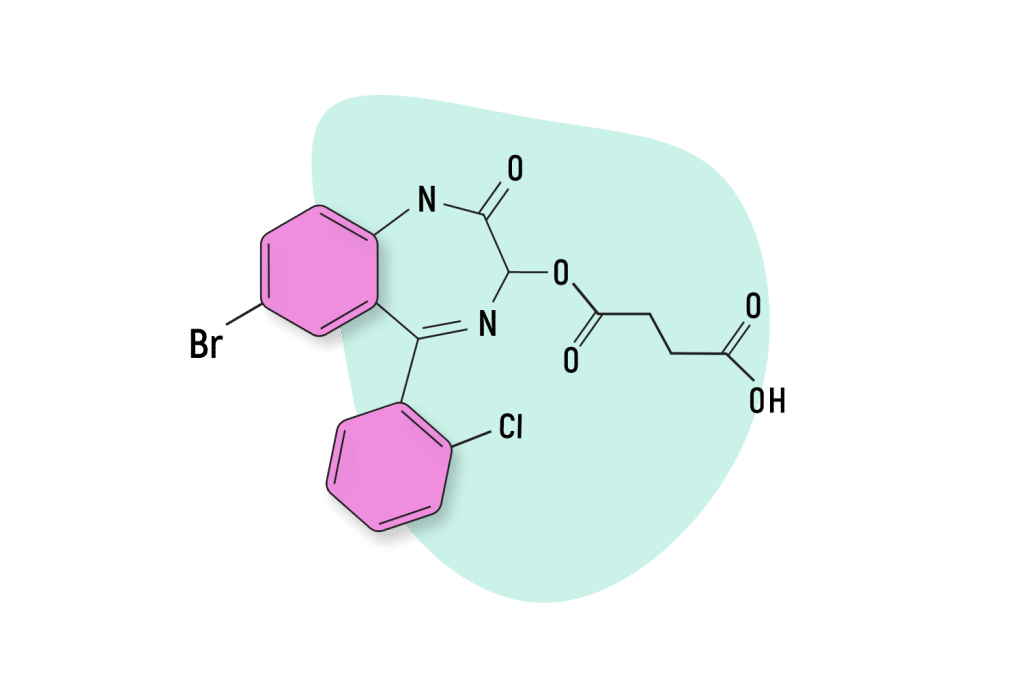
Natural Alternatives to Benzodiazepines
Users should be aware of the many natural alternatives to benzodiazepines as these compounds could be just as effective while also exposing them to fewer adverse effects.
L-Theanine
L-Theanine, a compound found in green and black tea, has anxiolytic and sedative qualities that, although not as potent, are not dissimilar to benzodiazepines. However, as with most natural alternatives, L-theanine is not as potent as pharmacological benzodiazepines [8].
Kratom
Kratom is a natural herbal compound that has a wide range of benefits. In low doses, it has stimulant and euphoric properties, while in mid-to-high doses, it becomes an anxiolytic and a sedative [9].
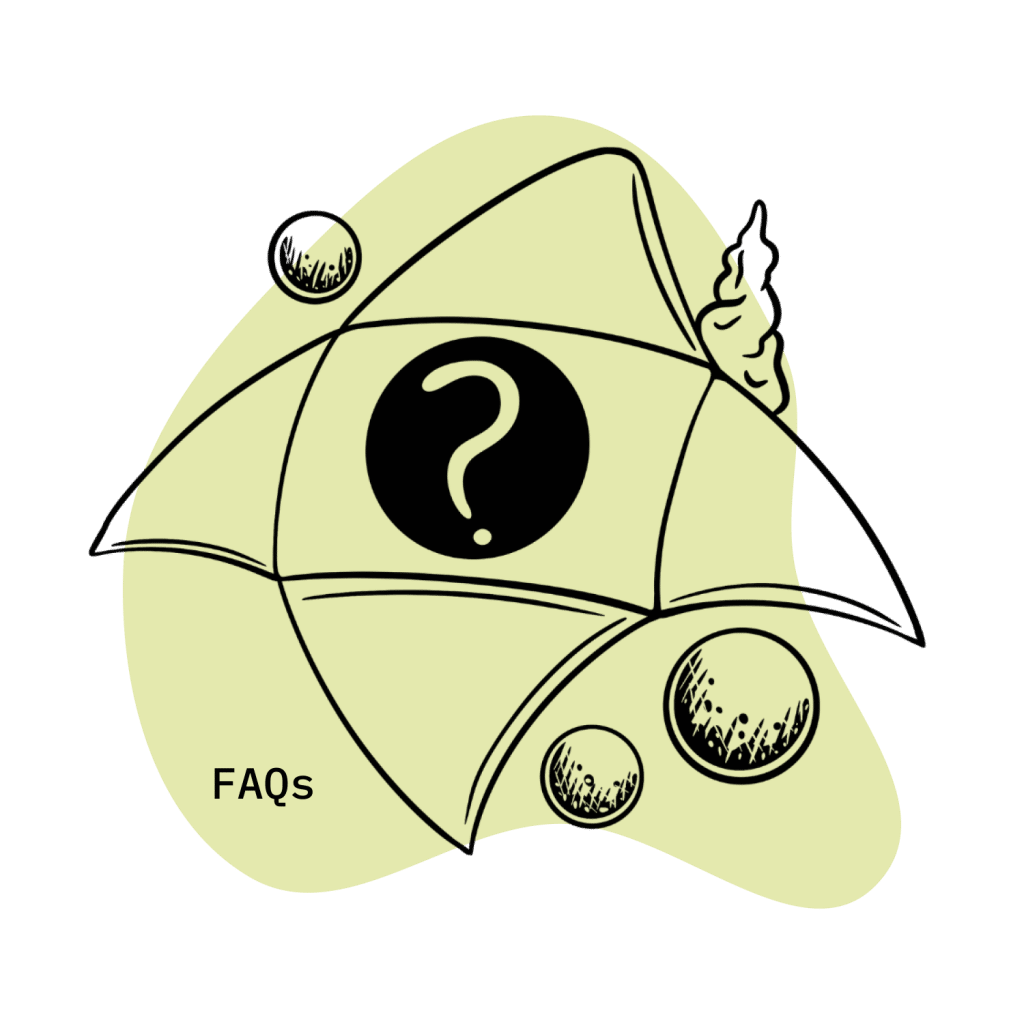
Quazepam FAQs
What are the effects of quazepam on sleep?
In comparison with the baseline established by the administration of placebo, quazepam in doses of 7.5 to 45 mg decreases sleep latency and percentage of stage 1 sleep. It facilitates sleep maintenance as measured by reductions in the number of awakenings, wake time after sleep onset and total wake time, and prolonged total sleep time. These effects are usually apparent following a single dose. The percentage of sleep spent in stage 2 increases, whereas that of rapid eye movement (REM) sleep and slow wave sleep (stages 3 and 4) is shortened.
Regarding pharmacology, how do quazepam’s active metabolites compare to the parent compound?
It has been shown that N-desalkyl-2-oxoquazepam displays limited pharmacological potential when compared to quazepam. 2-oxoquazepam, on the other hand, displays a comparable pharmacological potential to quazepam.
What formulations is quazepam available in?
Quazepam is available in oral tablets containing either 7.5 or 15 mg.
References
- Ankier, S. I., & Goa, K. L. (1988). Quazepam. Drugs, 35(1), 42-62.
- Miura, M., & Ohkubo, T. (2004). In vitro metabolism of quazepam in human liver and intestine and assessment of drug interactions. Xenobiotica, 34(11-12), 1001-1011.
- Ongini, E., Parravicini, L., Bamonte, F., Guzzon, V., Iorio, L. C., & Barnett, A. (1982). Pharmacological studies with quazepam, a new benzodiazepine hypnotic. Arzneimittel-forschung, 32(11), 1456-1462.
- Ongini, E., Parravicini, L., Bamonte, F., Guzzon, V., Iorio, L. C., & Barnett, A. (1982). Pharmacological studies with quazepam, a new benzodiazepine hypnotic. Arzneimittel-forschung, 32(11), 1456-1462.
- Roth, T., Tietz, E. I., Kramer, M., & Kaffeman, M. (1979). The effect of a single dose of quazepam (Sch-16134) on the sleep of chronic insomniacs. Journal of International Medical Research, 7(6), 583-587.
- Mariotti, M., & Ongini, E. (1983). Differential effects of benzodiazepines on EEG activity and hypnogenic mechanisms of the brain stem in cats. Archives internationales de pharmacodynamie et de thérapie, 264(2), 203-219.
- Murray, A., Bellville, J. W., Comer, W., & Danielson, L. (1987). Respiratory effects of quazepam and pentobarbital. The Journal of Clinical Pharmacology, 27(4), 310-313.
- Nathan, P. J., Lu, K., Gray, M., & Oliver, C. (2006). The neuropharmacology of L-theanine (N-ethyl-L-glutamine) a possible neuroprotective and cognitive enhancing agent. Journal of Herbal Pharmacotherapy, 6(2), 21-30.
- Eastlack, S. C., Cornett, E. M., & Kaye, A. D. (2020). Kratom—Pharmacology, clinical implications, and outlook: a comprehensive review. Pain and therapy, 9(1), 55-69.

